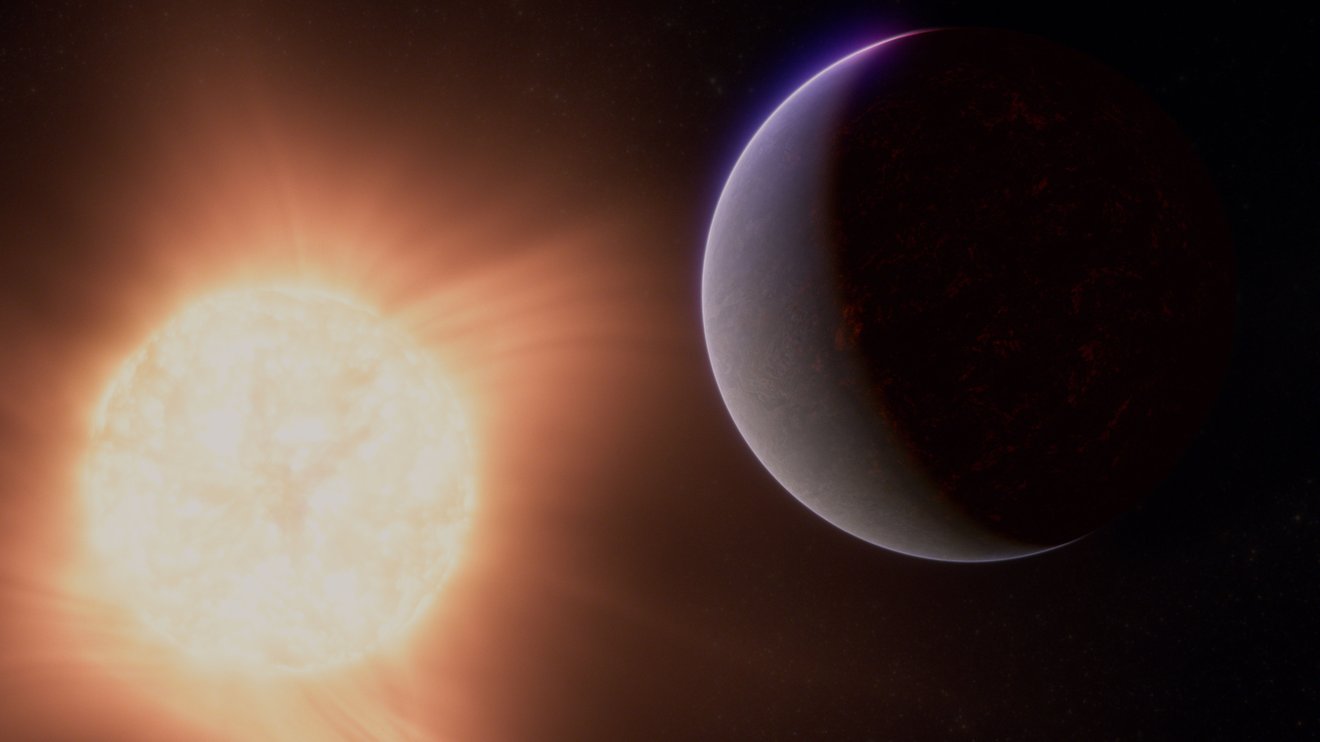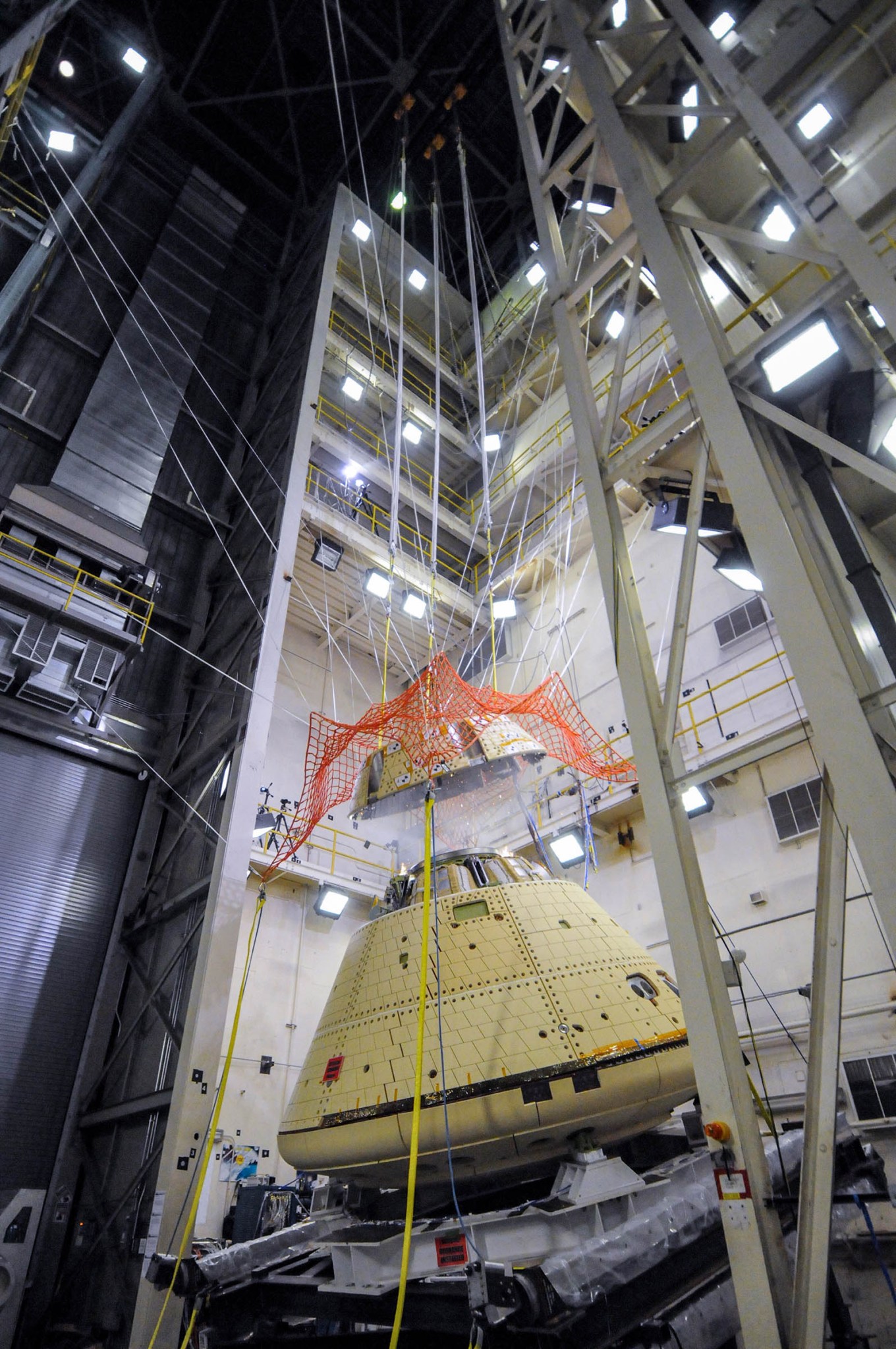Lockheed Martin Facilities
Development, testing, and assembly of Orion takes place at several different Lockheed Martin facilities across the country. This includes Lockheed Martin’s Waterton Canyon campus near Denver, which has been a hub of space innovation since the 1950s, and has more than 4,000 employees and a wide range of industry-leading design, manufacturing, and test facilities on site. Orion avionics and software testing also takes place at Lockheed’s Exploration Development Laboratory located in Houston.
Lockheed Martin assembles Orion (Artemis I & II) at NASA’s Michoud Assembly Facility and NASA’s Kennedy Space Center in the Neil Armstrong Operations and Checkout Building, and will soon be utilizing the new STAR Center, or Spacecraft, Test, Assembly and Resource Center, in Titusville, Florida, to build and test large Orion elements for Artemis III and beyond.

Structural Test Article
In June 2020, engineers completed testing on a duplicate of Orion called the Structural Test Article (STA), needed to verify the spacecraft is ready for its Artemis missions. NASA and its prime contractor, Lockheed Martin, built the STA to be structurally identical to Orion’s main spacecraft elements: the crew module, service module and launch abort system, but missing critical non-structural items such as the vehicle’s computers, propulsion, and seats not required for these tests.
Testing deliberately took the vehicle’s structure to the edge of its design, simulating the harsh environments that physically affect the structures of the Orion spacecraft. Invaluable to the mission, the tests on Orion’s “structural twin” at Lockheed Martin’s facility in Colorado provide a way to validate Orion structurally, and enable engineers to push the structure past design standards.
The STA testing required to qualify Orion’s design began in early 2017 and involved 21 tests, using six different configurations — from a single element, to the entire full stack — and various combinations in between. The different configurations simulated the different flight conditions, such as launch, return to Earth, parachute deployment, water landing, etc. Orion will go through during a mission. Teams worked round-the-clock for days at a time to prepare the tests, execute, tear down then reconfigure the STA for the next test, culminating in 330 actual days of testing. During some test phases, engineers pushed expected pressures, mechanical loads, vibration, and shock conditions up to 40 percent beyond the most severe conditions anticipated during the mission, analyzing data to confirm the spacecraft structures can withstand the extreme environments of space.
At completion, the testing verified Orion’s structural durability for all flight phases of Artemis missions.
Pressure Testing
Pushing and pulling with pressure that equates to 140 percent of the maximum expected loads during missions ensures the spacecraft structures can withstand intense loads at launch and entry into Earth’s atmosphere.
Modal Testing
During modal testing, dynamic loads of pressure are applied to the spacecraft structures. With more than 20,000 parts making up Orion’s service module alone, modal tests are needed to evaluate how all of the spacecraft components hold up to vibration, especially at connection points.
Stiffness/Qualification Testing
Stiffness/qualification testing applies pressure steadily and continuously to the spacecraft’s structures. This tests how the structures will respond to the critical static loads it will experience on missions.
Acoustic Testing
Orion will need to withstand incredible force during its missions. Blasting the structures with sound waves simulates the vibrating rumble of launch, reaching more than 160 decibels.
Pyrotechnic Shock Testing
Shock tests recreate the powerful pyrotechnic blasts that are needed for critical separation events during flight, such as the launch abort system separating from the crew module after a successful launch.
Jettison Testing
Jettison tests mimic deployment mechanisms required to jettison the forward bay cover and to ensure components can endure the shock levels expected during flight.
Lightning Testing
Lightning tests evaluate potential flight hardware damage when the flight vehicle is exposed to a lightning strike prior to launch.
Lightning tests evaluate potential flight hardware damage when the flight vehicle is exposed to a lightning strike prior to launch.
Structural Test Article (STA) Testing
| Start | End | Config | Test | Component |
| 4/11/17 | 4/14/17 | PP | Proof Pressure | CM |
| 5/27/17 | 9/8/17 | 12A | Stiffness/Qual | CM |
| 7/10/17 | 8/21/17 | 6 | Stiffness/Qual | LAS |
| 8/23/17 | 9/1/17 | 10 | Modal | ESM |
| 1/15/18 | 1/21/18 | 9 | Modal | CM/ESM |
| 1/26/18 | 1/30/18 | 3 | Modal | LAS/CM/ESM |
| 6/11/18 | 6/14/18 | 13 | Acoustic | LAS/CM/ESM |
| 6/21/18 | 7/11/18 | 4 | Modal | LAS/CM/ESM |
| 7/24/18 | 7/24/18 | 15 | Pyro Shock | LAS/CM R&R |
| 8/14/18 | 8/15/18 | 18A | Pressure | CM |
| 10/29/18 | 11/16/18 | 5 | Stiffness | LAS/CM/ESM |
| 1/15/19 | 1/31/19 | 18 | Acoustic | CM (FBC GAP) |
| 5/1/19 | 5/1/19 | 19 | Jettison | CM (FBC) |
| 6/3/19 | 9/13/19 | 7 | Stiffness/Qual | ESM |
| 6/8/19 | 7/3/19 | 20 | Pyro Shock | CM (Mortar/Riser) |
| 9/11/19 | 12/4/19 | 12 | Stiffness/Qual | CM |
| 1/22/20 | 1/29/20 | 11A | Modal | LAS/CM/ESM |
| 3/26/20 | 4/13/20 | 14 | Lightning | LAS/CM/ESM |
| 6/1/20 | 6/1/20 | 16 | Jettison | CM/ESM (SAJ) |
| 6/17/20 | 6/17/20 | 17 | Pyro Shock | CM/ESM R&R |
| 7/31/20 | 10/9/20 | 6A | Stiffness/Qual & Modal | LAS |
| 7/15/20 | 7/28/20 | 21 | Pyro Shock | CM (DMJS) |
Integrated Test Lab
The Orion Integrated Test Lab (ITL) at Lockheed Martin’s facility near Denver simulates the flight environment to test Orion’s avionics and flight software functions for both Artemis I and II. NASA teams have done real-time monitoring and commanding of the ITL Orion vehicle in Denver from the Mission Control Center in Houston, during tests of the Orion communication system and simulations of Orion’s uncrewed flight to the Moon for Artemis I. The ITL began integration for the Artemis I mission in January 2015.
Tests performed using the ITL are essential for identifying software problems and validating proper functionality and performance of the spacecraft avionics system. Orion’s avionics and flight software functions tested at the ITL include ascent abort, safe mode, fault detection, isolation and recovery, optical navigation, maneuver plan management, and propulsion failure detection.
The ITL tests the millions of lines of software code with flight-representative engineering development unit avionics hardware in a flight-like configuration.
The lab runs full mission scenarios from pre-launch to landing, or specific phases and events, in real time. The lab has a fully integrated set of Orion’s complex crew module and service module avionics, power, wiring, and guidance, navigation, and control hardware. The lab is the only one of its kind that can integrate hardware and software across all of Orion program elements, and the lab is also used by other programs such as Space Launch System, Exploration Ground Systems and the Flight Operations Division to conduct integrated Artemis mission testing.
An Integrated Test Lab rig configuration is the highest fidelity test platform that Orion avionics hardware and software would experience prior to actual testing regimens on the assembled vehicle. In this configuration, many actual vehicle avionics components are connected and loaded with associated flight software. Appropriate vehicle, environmental, and dynamics simulations, along with actual and/or simulated sensor/effectors and stimulators provide as close to a “test like you fly” environment as can be assembled within a lab setting.
Exploration Development Lab
The Exploration Development Laboratory in Houston (EDL-H) is a state-of- the-art test facility initially funded by Lockheed Martin and its teammates United Space Alliance and Honeywell. The EDL was designed to reduce cost and schedule risk by providing an early opportunity in the development phase of the program to perform systems-level avionics and software testing for Orion in a realistic environment. The EDL-H’s location adjacent to NASA Johnson Space Center has enabled the Lockheed Martin team to work closely with NASA early in the development and testing phase to gain clarity on requirements, including early involvement and collaboration with astronaut flight crew members and flight controllers.
Initial testing of critical systems is done in the EDL-H, including the guidance, navigation, and control (GN&C), automated rendezvous and docking, crew interfaces, and software development processes. Avionics system testing was performed to reduce risk prior to Pad Abort-1 flight testing at White Sands Missile Range and Exploration Flight Test-1 at NASA’s Kennedy Space Center. EDL testing also included system integration tests and mission tests that employ the team’s “test like you fly” philosophy.
The EDL-H houses the Houston Orion Test Hardware, otherwise known as HOTH, which is used to perform early development, integration, dry-run testing of Orion avionics hardware and software, and associated internal and external crew module interfaces using flight-representative flight software and an appropriate suite of ground support tools, systems, and software.
STAR Center
The STAR Center, or Spacecraft, Test, Assembly and Resource Center, in Titusville, Florida, is a Lockheed Martin production center for Orion spacecraft that will fly on Artemis III and beyond. The center provides urgently needed space to expand and streamline manufacturing capacity.
Elements of the spacecraft that take large amounts of floor space and that are built and tested outside the normal spacecraft assembly flow will be moved to the STAR Center. This gives production teams more room at NASA’s Operations & Checkout (O&C) Building to assemble and test more Orion spacecraft simultaneously and quicker.
The center’s work will start with the Orion Artemis III spacecraft, with many components already in development. The STAR Center will provide assembly and test of Orion aeroshell heat shield and backshell panels, including thermal protection system installation; crew module and crew module adapter wire harness fabrication and testing; propulsion and environmental control and life support systems assembly and testing; and electrical ground support equipment production.
The facility features a class 7 clean room for spacecraft component assembly, a proof pressure cell for spaceflight readiness testing, and a 9,000-square-foot high bay with ceiling crane. It also includes nondestructive evaluation and inspection capability, which allows team members to test and analyze materials, parts, structures, or systems without damaging the original component, as well as a separate machine shop.
The STAR Center is also integrated into Lockheed Martin’s Intelligent Factory Framework (IFF), an edge computing platform that secures, scales, and standardizes device connectivity through various IT platforms. This digital-first approach streamlines production and maximizes agility by connecting devices virtually. In addition, more than 30 machines at the STAR center will be connected to this IFF, as well as machines at NASA’s O&C, giving all production team members at both facilities real-time access to valuable data. The center also employs remote access, monitoring and alerting technologies for equipment, plus smart tools such as virtual reality and augmented reality.





























